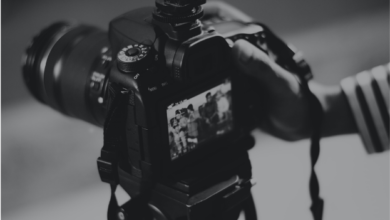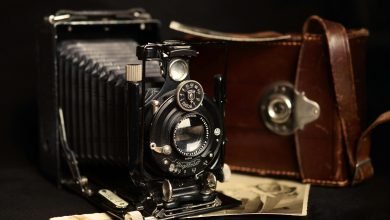If you’ve used a flash on your camera before, then you’re familiar with the term hot shoe. What about a cold shoe? What is it and what is it used for? Why this gadget is worth keeping in your camera bag tells professional photographer Chad Verzosa.
Hot shoe and cold shoe
To avoid any confusion, let’s figure out the difference between cold and hot shoe.
- The hot shoe is a special metal bracket on the top of the camera. That you use to attach an external flash. It is called hot. Because it has electronic contacts that allow it to send an electrical control signal from the camera to a portable device.
- A cold shoe is a lot like a hot shoe, the difference is that it lacks electronic contacts to trigger a flash. Hence the term “cold”.
There are many types of cold shoe for different purposes. Let’s take a look at some of the popular options and how to use them.
Cold shoe for external flash
One of the most common cold shoe uses is to mount flash units on tripods or studio stands.

They are usually equipped with top brackets and bottom threaded fasteners. All you have to do is screw them onto the rack, mount the flash like you would on a regular hot shoe, and you’re done. These are simple and compact devices that capture flash well.
There are also cold shoe mounts with adjustable brackets. They not only hold the flash but also allow you to direct its light in any direction. Most of these cold shoe fittings have holes that you can easily install, for example, a photo umbrella.
It is reasonable to ask the question that since the cold shoe has no electronic contact, how can the flash be controlled remotely? In this case, the cold shoe simply acts as an adapter to hold the flash. The flash is switched on via a wireless trigger. Which receives a command from the camera via an optical or radio signal.
The cold shoe with electronic contacts
So, the difference between a cold shoe and a hot shoe is primarily that the latter can transmit electrical signals and trigger the flash. However, there are also cold shoe that can be electronically coupled to the camera’s hot shoe.
Despite this internal electronic connection, they are still called cold because they cannot fire the flash on their own, unlike a regular hot shoe. You can think of them as “electrical extension cords” that allow you to transfer an electrical impulse to a flash.
Electronic cold shoe are quite unusual today because they allow you to connect a camera directly to a flash using a PC sync cable.
However, there are times when this particular type of cold shoe will come in handy, such as physically firing two or more flashes from a single hot shoe. The most common designs that use cold shoe with electrical contacts are L-shaped extension cords and double holders, which are discussed below.

Cold shoe holder (extension)
The cold shoe holder has brackets made of metal or plastic that extend from the hot shoe to the side of the camera. Some options have internal electrical connections that allow the camera’s hot shoe to send signals directly to the flash without a sync cable.
Why is it such a strange design? Camera flash is known to be poorly directed at a subject. The holder (extension) is designed to provide the effect of an external flash when attached to the camera. The brackets are located to the left or right of the camera, so you are not aiming light directly at the subject. These accessories are especially useful for news reporting. They provide an attractive appearance to an object without the need for a separate light stand.
As with all cold shoe options discussed above, extensions come in a variety of designs. There is a basic L-shaped design, some variants also have adjustable levers. There are also dual mounts that allow you to attach two flashes at once on top of the camera.

adapter for microphones and other photo and video accessories
Since DSLRs and mirrorless cameras began to include video recording features, the hot shoe has become a convenient place to install all kinds of video and audio accessories. This adapter can be used to connect microphones, video monitors, LED lights, and of course a GoPro camera. These adapters are often used to record video with a GoPro while you are taking photos with the main camera.

How to use the cold shoe?
Due to the differences in the design of the cold shoe, the installation method also varies. But, no matter. you have, installation is straightforward. Because the sizes of the brackets are universal, they will fit any camera with a standard hot shoe.

The simplest versions have brackets that you can insert into a hot shoe or a threaded mount that you can attach to a tripod. More complex designs have either screws or handles that are easy to loosen or tighten. These types of cold shoe are often safer. Because they ensure that your equipment is held securely and will not slip.
be sure it is compatible with the design of the camera.
Read More Article
FUJIFILM X-Pro3 live-action review.
FUJIFILM X-S10 live-action review
Fujifilm X-A7 mirrorless camera review







One Comment